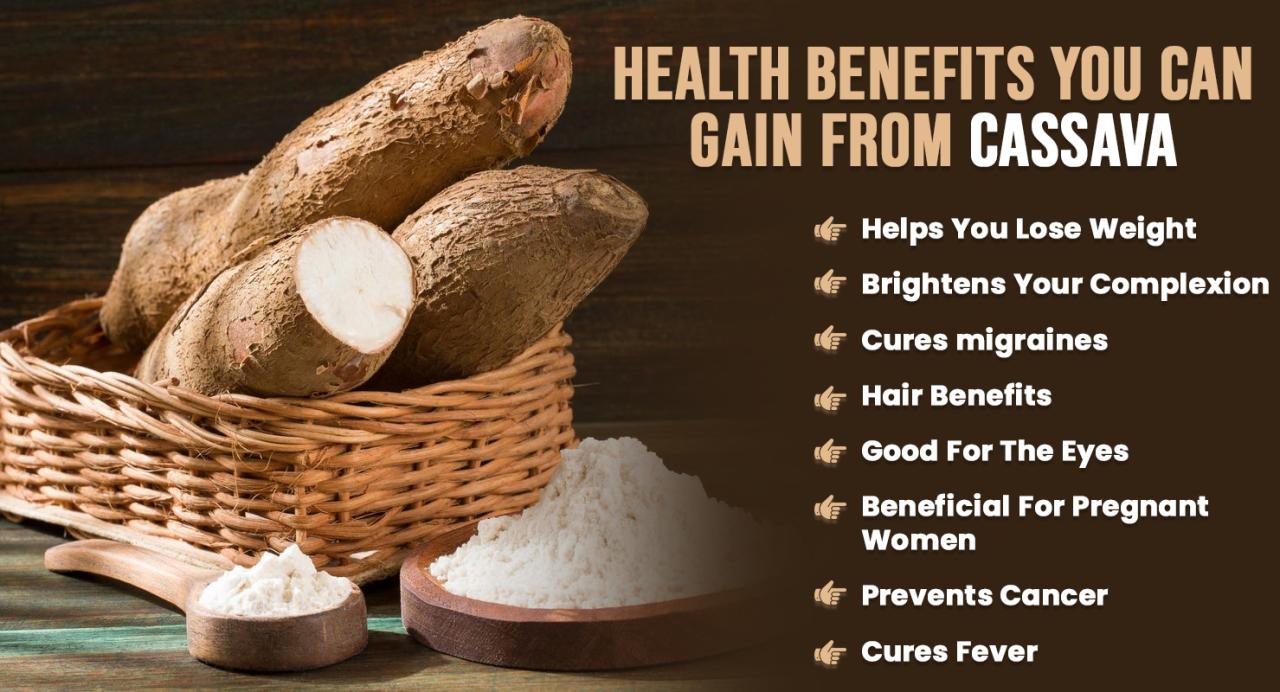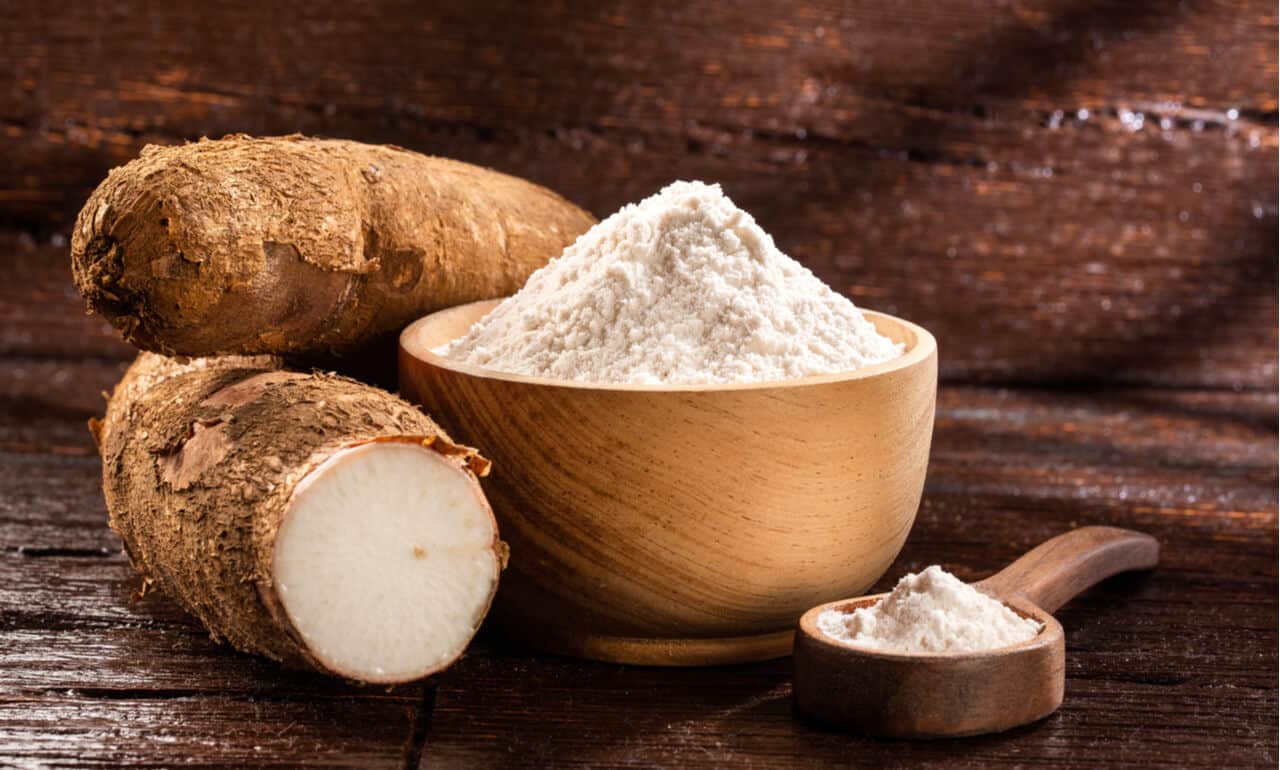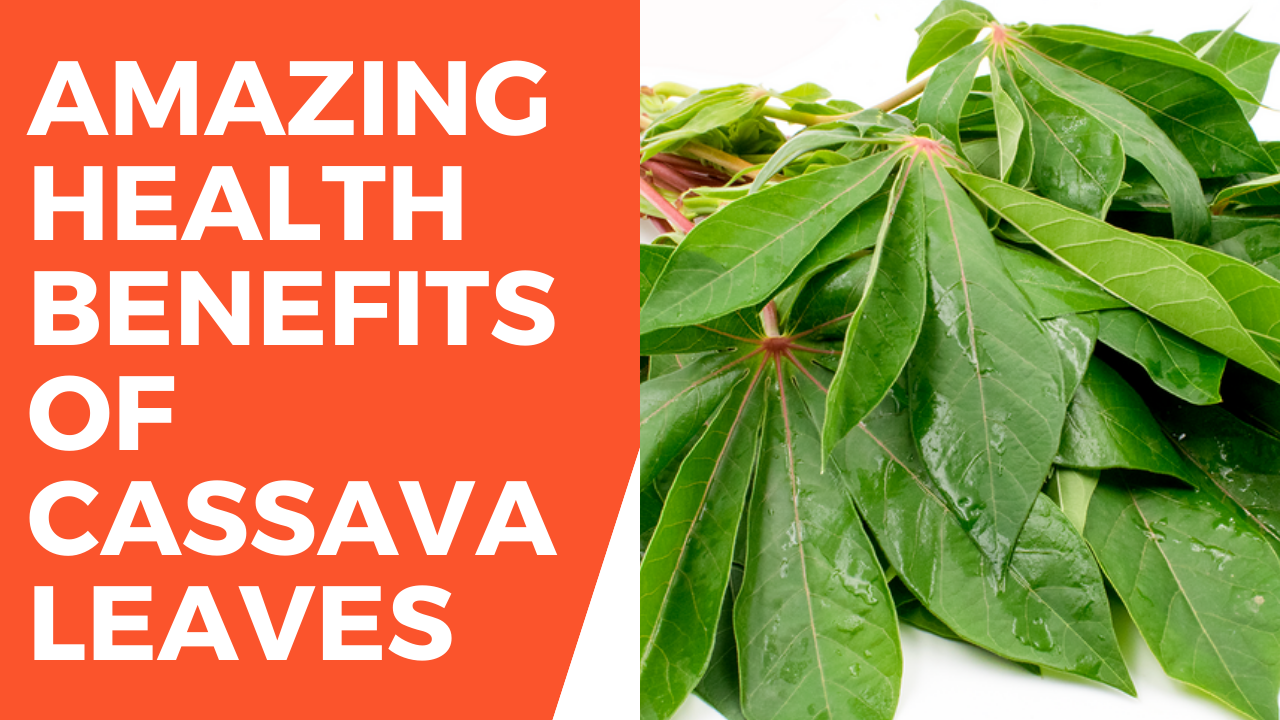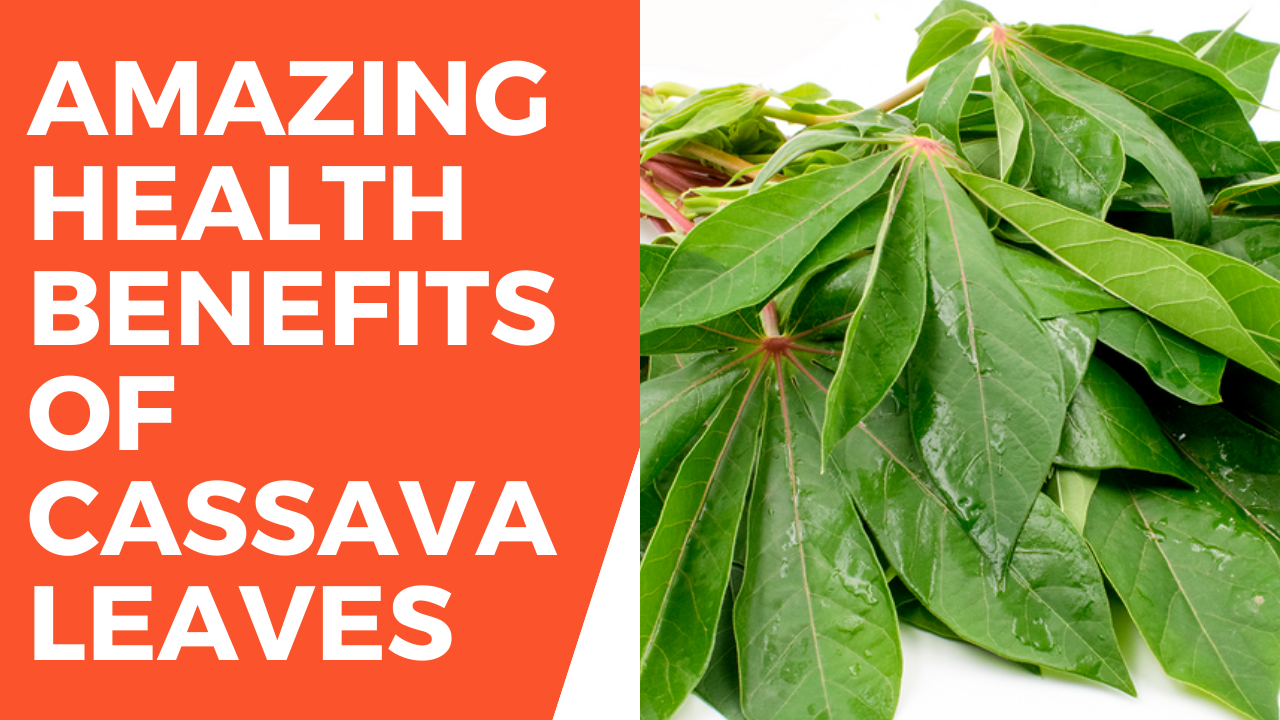Discover How to Utilize Cassava Leaf for Maximum Health Benefits: Tips for Cooking and Growth. Often overlooked, cassava leaves are a nutritional powerhouse packed with vitamins, minerals, and antioxidants. From boosting immunity to improving blood sugar control, these leafy greens offer a range of health benefits.
This guide delves into the culinary uses of cassava leaves, providing recipes and tips for preserving their nutritional value during cooking. We’ll also explore the ideal growing conditions for cultivating cassava leaves, ensuring a bountiful harvest. Join us as we unlock the potential of this versatile ingredient, revealing how to incorporate it into a balanced diet for optimal health.
Cassava leaves are a versatile ingredient that can be incorporated into various dishes, adding a unique flavor and nutritional boost. They can be steamed, stir-fried, or used in soups and stews. Whether you’re a seasoned chef or a beginner in the kitchen, there’s a cassava leaf recipe waiting to be discovered.
Cassava Leaf: A Nutritional Powerhouse

Cassava leaves, often referred to as “cassava greens” or “manihot leaves,” are a highly nutritious and versatile leafy green vegetable. They are a staple food in many tropical and subtropical regions, particularly in Africa, South America, and Southeast Asia. While the starchy cassava root is commonly consumed, the leaves offer a wealth of essential nutrients and health benefits.
Nutritional Profile of Cassava Leaves
Cassava leaves are an excellent source of various vitamins, minerals, and antioxidants. They are particularly rich in:
- Vitamins:Vitamin A, vitamin C, vitamin K, riboflavin, niacin, folate, and thiamin.
- Minerals:Iron, calcium, potassium, magnesium, and phosphorus.
- Antioxidants:Cassava leaves are high in antioxidants, such as flavonoids, carotenoids, and phenolic compounds, which protect cells from damage caused by free radicals.
Cassava leaves also contain a good amount of protein, fiber, and essential amino acids. They are low in calories and fat, making them a healthy and nutritious addition to any diet.
Health Benefits of Consuming Cassava Leaves
The abundance of nutrients in cassava leaves contributes to various health benefits, including:
- Improved Blood Sugar Control:Cassava leaves contain compounds that can help regulate blood sugar levels, making them beneficial for individuals with diabetes or those at risk of developing the condition.
- Boosted Immunity:The high vitamin C content in cassava leaves helps strengthen the immune system, protecting against infections and illnesses.
- Enhanced Heart Health:The potassium and antioxidants in cassava leaves contribute to heart health by reducing blood pressure and lowering the risk of cardiovascular diseases.
- Improved Digestion:The fiber in cassava leaves promotes healthy digestion and helps prevent constipation.
- Improved Vision:Cassava leaves are rich in vitamin A, which is essential for maintaining good vision.
Comparison with Other Leafy Green Vegetables
Cassava leaves are often compared to other popular leafy greens like spinach, kale, and collard greens. While they share some nutritional similarities, cassava leaves stand out with their higher iron content, which is essential for red blood cell production and oxygen transport.
Nutrient |
Cassava Leaves (100g) |
Spinach (100g) |
Kale (100g) |
Collard Greens (100g) |
|---|---|---|---|---|
Vitamin A (IU) |
1500 |
5500 |
5300 |
6000 |
Vitamin C (mg) |
50 |
28 |
89 |
48 |
Iron (mg) |
3.5 |
2.7 |
2.8 |
2.5 |
Calcium (mg) |
100 |
296 |
147 |
357 |
“Cassava leaves are a nutritional powerhouse, offering a wide range of vitamins, minerals, and antioxidants that contribute to overall health and well-being.”
Just as understanding the optimal time to sow grass seed for a lush lawn, as outlined in The Ideal Times to Sow Grass Seed: Tips for a Thriving Lawn , is crucial for a thriving green space, knowing when and how to harvest cassava leaves is key to unlocking their full nutritional potential.
This versatile ingredient can be enjoyed in various dishes, offering a wealth of vitamins and minerals. From steaming to stir-frying, explore different cooking methods to maximize the health benefits of cassava leaves.
Culinary Uses of Cassava Leaves
Cassava leaves, a nutritional powerhouse, are a versatile ingredient in various cuisines worldwide. Their unique flavor and texture make them suitable for a wide range of dishes, from simple stir-fries to hearty soups. This section explores the diverse culinary uses of cassava leaves, providing recipes and tips for maximizing their nutritional value.
Methods for Preparing Cassava Leaves
Cassava leaves can be prepared using different cooking methods, each contributing a distinct flavor and texture to the final dish. Here’s a table outlining popular methods, their cooking times, key ingredients, and resulting flavor profiles:
Method |
Cooking Time |
Ingredients |
Flavor Profile |
|---|---|---|---|
Steaming |
15-20 minutes |
Cassava leaves, water, salt, garlic, ginger |
Mild, slightly bitter, retains nutrients |
Stir-frying |
5-10 minutes |
Cassava leaves, oil, garlic, ginger, soy sauce, chili peppers |
Savory, slightly spicy, quick and easy |
Soup |
30-45 minutes |
Cassava leaves, broth, vegetables, meat or fish, spices |
Hearty, flavorful, versatile, good for cold weather |
Boiling |
10-15 minutes |
Cassava leaves, water, salt, onions, tomatoes |
Simple, basic, good for sauces and stews |
Tips for Preserving Nutritional Value
To ensure maximum nutrient retention during cooking, it’s crucial to follow these tips:
- Minimize Cooking Time:Overcooking cassava leaves can lead to nutrient loss. Use appropriate cooking methods and times to preserve their nutritional value.
- Avoid High Heat:High temperatures can degrade vitamins and minerals. Opt for moderate heat settings when cooking cassava leaves.
- Steam or Stir-Fry:These methods require less water and cooking time, minimizing nutrient loss.
- Add Leaves Towards the End:If incorporating cassava leaves into soups or stews, add them towards the end of the cooking process to preserve their delicate texture and nutrients.
Recipes Featuring Cassava Leaves
Cassava leaves can be incorporated into a variety of dishes, showcasing their versatility and nutritional value. Here are a few recipe examples:
1. Steamed Cassava Leaves with Garlic and Ginger
- Ingredients:
- 1 pound cassava leaves, washed and drained
- 2 cloves garlic, minced
- 1 inch ginger, grated
- Salt to taste
- Instructions:
- Place cassava leaves in a steamer basket.
- In a small bowl, combine garlic, ginger, and salt.
- Pour the mixture over the cassava leaves.
- Steam for 15-20 minutes, or until leaves are tender.
- Serve hot with rice or as a side dish.
2. Stir-Fried Cassava Leaves with Soy Sauce and Chili Peppers
- Ingredients:
- 1 pound cassava leaves, chopped
- 2 tablespoons oil
- 2 cloves garlic, minced
- 1/2 inch ginger, grated
- 2 tablespoons soy sauce
- 1-2 chili peppers, chopped (optional)
- Instructions:
- Heat oil in a wok or large skillet over medium heat.
- Add garlic and ginger and cook for 1 minute.
- Add cassava leaves and stir-fry for 5-10 minutes, or until tender.
- Pour in soy sauce and chili peppers, and stir to combine.
- Serve hot with rice or noodles.
3. Cassava Leaf Soup with Chicken and Vegetables
- Ingredients:
- 1 pound cassava leaves, chopped
- 4 cups chicken broth
- 1 cup chopped chicken
- 1 cup chopped carrots
- 1 cup chopped potatoes
- 1/2 cup chopped onions
- 1 teaspoon salt
- 1/2 teaspoon black pepper
- Instructions:
- In a large pot, bring chicken broth to a boil.
- Add chicken, carrots, potatoes, and onions. Reduce heat to low and simmer for 15 minutes.
- Add cassava leaves and cook for 10 minutes, or until tender.
- Season with salt and pepper to taste.
- Serve hot with a dollop of sour cream or yogurt.
Growing Cassava Leaves for Optimal Yield

Cultivating cassava leaves for maximum yield requires understanding the plant’s needs and implementing appropriate growing practices. This section delves into the ideal conditions for cassava leaf growth, addressing soil type, sunlight requirements, and water needs. It also discusses common pests and diseases that can affect the plant, providing methods for prevention and control.
Lastly, it Artikels a step-by-step guide for planting, nurturing, and harvesting cassava leaves.
While cassava leaves are a nutritional powerhouse, you might also consider adding a touch of natural pest control to your garden. Discover how citronella plants can enhance your garden by repelling pesky insects, Discover How Citronella Plant Can Enhance Your Garden: A Guide to Growing and Using , and even provide a calming aroma.
Once you’ve established your citronella patch, you can focus on incorporating cassava leaves into your culinary creations, maximizing their health benefits through innovative cooking techniques.
Ideal Growing Conditions for Cassava Leaves
Cassava thrives in warm, humid climates and prefers well-drained, sandy loam soil. It can tolerate a wide range of soil pH levels but performs best in slightly acidic to neutral soil. Here’s a breakdown of the ideal growing conditions:
- Soil Type:Sandy loam soil is ideal as it provides good drainage and aeration, preventing root rot. However, cassava can grow in a variety of soil types, including clay and sandy soils.
- Sunlight Requirements:Cassava is a sun-loving plant and requires at least 6 hours of direct sunlight per day for optimal growth. It can tolerate some shade, but growth may be stunted.
- Water Needs:Cassava is relatively drought-tolerant, but regular watering is essential for healthy growth. It requires deep watering during the dry season, especially during the early stages of growth. Overwatering can lead to root rot.
Pests and Diseases Affecting Cassava Leaves
Cassava is susceptible to various pests and diseases that can affect leaf growth and yield. Understanding these threats is crucial for implementing effective prevention and control measures. Some common pests and diseases include:
- Cassava Mealybug:These tiny insects feed on plant sap, causing stunting and wilting. They can be controlled using insecticidal soap or neem oil.
- Cassava Green Mite:These mites cause leaf discoloration and damage, reducing plant growth. They can be controlled using miticides.
- Cassava Mosaic Disease:This viral disease causes leaf distortion and mosaic patterns, affecting plant growth. It is spread by whiteflies and can be prevented by using disease-free planting material and controlling whitefly populations.
- Cassava Bacterial Blight:This bacterial disease causes leaf spots and wilting, leading to plant death. It can be prevented by using disease-free planting material and practicing crop rotation.
Step-by-Step Guide for Planting, Nurturing, and Harvesting Cassava Leaves
Planting, nurturing, and harvesting cassava leaves involves a series of steps that ensure healthy growth and optimal yield. Here’s a comprehensive guide:
- Prepare the Soil:Select a sunny location with well-drained soil. Dig a hole approximately 1 foot deep and 1 foot wide. Amend the soil with compost or manure to improve drainage and fertility.
- Plant the Cassava Stems:Cut healthy cassava stems into pieces about 12 inches long, ensuring each piece has at least two nodes. Plant these cuttings vertically in the prepared holes, leaving the nodes above the soil level.
- Water Regularly:Water the newly planted cassava stems deeply after planting. Continue to water regularly, especially during dry periods. Ensure the soil is consistently moist but not waterlogged.
- Fertilize:Apply a balanced fertilizer every 4-6 weeks, especially during the growing season. This will provide the necessary nutrients for healthy growth.
- Control Pests and Diseases:Regularly inspect the cassava plants for signs of pests and diseases. Take appropriate measures to control them, such as using insecticidal soap, neem oil, or miticides.
- Harvest the Leaves:Harvest cassava leaves when they are young and tender. The best time to harvest is when the leaves are about 6-8 inches long. Cut the leaves just above the node, leaving a few leaves on the stem to allow for continued growth.
Incorporating Cassava Leaves into a Balanced Diet: Discover How To Utilize Cassava Leaf For Maximum Health Benefits: Tips For Cooking And Growth
Cassava leaves, a nutritional powerhouse, offer a wealth of vitamins, minerals, and antioxidants, making them a valuable addition to a balanced diet. However, incorporating them effectively requires understanding their unique characteristics and how to best utilize them in various culinary traditions.
Meal Planning with Cassava Leaves
A well-planned meal plan can seamlessly integrate cassava leaves into your daily diet. Here’s a sample meal plan showcasing their versatility:
- Breakfast:Cassava leaf omelet with whole-wheat toast and a side of fresh fruit. The omelet can be prepared by sautéing chopped cassava leaves with onions and tomatoes, then whisking in eggs and cooking until set.
- Lunch:Cassava leaf soup with brown rice and a mixed green salad. This soup can be made with a flavorful broth, adding diced cassava leaves, vegetables like carrots and potatoes, and seasonings like ginger and garlic.
- Dinner:Cassava leaf stir-fry with tofu and brown rice. This stir-fry can be prepared by quickly stir-frying chopped cassava leaves with tofu, soy sauce, and other seasonings, and served over brown rice.
Tips for Incorporating Cassava Leaves into Different Cuisines
Cassava leaves are highly adaptable and can be integrated into various culinary traditions with a few key tips:
- African Cuisine:Cassava leaves are a staple in many African dishes. They can be used in soups, stews, and sauces, often combined with other leafy greens, meats, and vegetables. For example, “Egusi soup,” a popular Nigerian soup, often features cassava leaves as a key ingredient.
- Asian Cuisine:Cassava leaves can be incorporated into stir-fries, curries, and noodle dishes, offering a unique flavor and texture. For example, cassava leaves can be added to a Thai green curry, providing a slightly bitter note that complements the other flavors.
- Latin American Cuisine:Cassava leaves are frequently used in Latin American dishes, particularly in Brazil, where they are known as “taioba.” They are often cooked in stews, soups, and rice dishes.
Moderation and Potential Risks, Discover How to Utilize Cassava Leaf for Maximum Health Benefits: Tips for Cooking and Growth
While cassava leaves offer numerous health benefits, moderation is key. Excessive consumption can lead to certain risks:
- Cyanide Content:Cassava leaves contain cyanogenic glycosides, which break down into cyanide when consumed. While cooking properly reduces cyanide levels, excessive consumption can lead to cyanide poisoning, characterized by symptoms like nausea, vomiting, and dizziness.
- Digestive Issues:Cassava leaves are high in fiber, which can be beneficial for digestion but may cause digestive discomfort, particularly when consumed in large quantities.
- Interactions with Medications:Cassava leaves may interact with certain medications, such as blood thinners. Consult a healthcare professional before consuming cassava leaves if you are taking any medications.
Epilogue

From understanding the nutritional profile and culinary uses of cassava leaves to mastering their cultivation, this guide provides a comprehensive overview of this versatile ingredient. Incorporating cassava leaves into your diet can contribute to a healthier lifestyle, offering a wealth of benefits for your body and mind.
So, embrace the power of cassava leaves and unlock a world of culinary possibilities and nutritional advantages.
Quick FAQs
Are cassava leaves safe to eat?
Yes, cassava leaves are safe to eat when properly prepared. However, it’s important to note that raw cassava leaves contain toxins that can cause health issues. Therefore, it’s crucial to cook them thoroughly before consumption.
What are the potential side effects of consuming cassava leaves?
While cassava leaves offer numerous health benefits, excessive consumption can lead to side effects like digestive issues, such as bloating and diarrhea. It’s always best to consume cassava leaves in moderation as part of a balanced diet.

